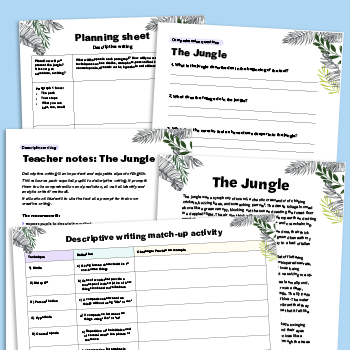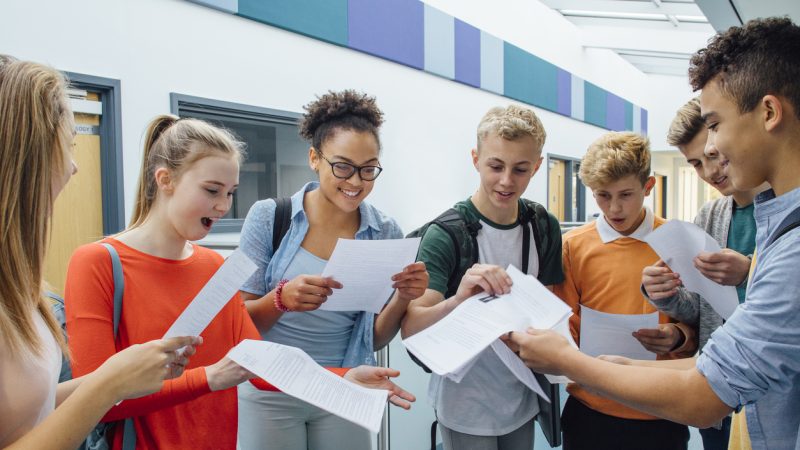Use performance poetry to give students who struggle with literacy a way to speak out

Starting secondary school can be especially tough for students who struggle with literacy, says Imran Hafeez, so here's how to give them a voice…

- by Imran Hafeez

Transitioning from primary to secondary school is often a challenging and worrying time for young people. Even more so for those who start secondary school with low levels of literacy, for whom the added hurdle of transition can cause them to fall even further behind.
This was the reality for a huge number of children who arrived at secondary school in Bradford last September, as 43% had left primary school unable to read at the level expected for an 11-year-old and 31% hadn’t met the expected levels for grammar, punctuation and spelling.
I am manager of the National Literacy Trust in Bradford – and so, in order to address this particular challenge in our area, we designed the Our Stories programme to help children become more confident communicators by enabling them to explore their identities, personal challenges and ambitions through poetry. Our Stories feeds young people’s curiosity about poems, encourages them to play around with language and performance, enables them to explore their own voice, and helps them discover connections between their cultural identity and creativity.
Local heroes
Key to the success of the programme was bringing in local performance poets to work with and perform for the students. Their shared sense of place and belonging really resonated with the students and the poets became important role models – people who came from the same communities as the youngsters; who have a voice, who are successful, and who value literacy.
Our Stories has not only improved young people’s writing levels, closing the gap between students with low and high literacy levels, but it has significantly boosted their overall confidence and resilience – characteristics that are key for helping children through transition.
As the young people became more confident expressing themselves through poetry, they began to explore issues and feelings that they wouldn’t usually feel comfortable speaking directly to a teacher about. In turn, these insights have helped teachers and schools to better support their students through transition.
Here are some exciting exercises from the Our Stories programme that you can use to get your own students inspired by poetry and performance:
1. Performance poetry – getting started
Poetry writing and performance is something which anyone can do, and you can show your students this through some simple starter activities. These will help learners grasp the basics of poetry, and encourage them to think about their identity, share their views on life, discuss their experiences of family and friends, and value answers from across the group.
- Call and response rhythm game:
Standing in a circle, each person creates a rhythm by clapping, clicking, stamping or a percussive vocal sound. The other young people in the circle then need to each repeat this rhythm as closely as they can. Then get the group to come up with a four-bar beat (eg clap, clap, stamp stamp); going round the group, each person inserts their name into the beat. - Silly stress name game:
Standing in a circle, each person says their name in a strange way by putting the stress on a different syllable or, if their name is one syllable, drawing it out in a tonal way. You can add actions to this too and explore how, in poetry, language is stressed and intonation is key to creating meaning. - Free write:
Place an object in the classroom; this can be anything, e.g. a leaf, an orange, a spoon. Challenge students to describe the object, writing for five minutes without thinking and without stopping. If they get stuck, they just write ‘and, and, and…’ until the thought flows again. Ask each student to read their phrases out loud and write them up on the board; then ask the group to combine as many as phrases as possible to create a new piece of writing – it can take any form. - Quick-fire sketching:
A blank sheet of paper can be intimidating. Quick-fire sketching activities can help inspire ideas and act as a frame for students’ written work, eg pupils draw round their hands or feet or draw self-portraits and then write poems in and around the shapes.
2. Find poetry beyond the page
Make opportunities to show young people that poetry isn’t just written in long textbooks to study for exams – that it is in fact inherent in all writing, has many forms including rap, song lyrics and free verse, and can even be explored through imagery. For example, if you talk about Tupac Shakur’s poetry in class, it suddenly becomes cool, relevant and exciting, and students become willing to listen and give poetry a chance!
Try this ‘Reading a Photograph’ exercise in class (1 hour):
Trending
Divide your students into pairs or small groups. Ask them to choose a photo of a poet from ourstories.org.uk.
20 minutes: Ask the students to talk through the following prompts about the photo they’ve chosen in preparation for sharing their findings with the class:
- Look closely at the image; scan it from top to bottom and left to right
- What is the most obvious thing about the photo?
- Are there any tiny details you can spot that other people might miss?
- What do you notice about the mood and the colour?
- Where is the poet looking? What are they doing?
- What might their personality be like? How can you tell?
- What do you think their poetry might be like, and why?
20 minutes: Now ask your students to explore the online archives and listen to and read poems by their chosen poet: poetryarchive.org.
- Is there a connection between the poet’s personality in the photograph and the poems they write?
- How well do you think the photographer knew the poetry of the poet?
- How do you think the poet would have felt about their photo?
- What might you have done differently to represent the poet?
- What question would you like to ask this poet?
3. Make museum and gallery visits more exciting
Local museums and galleries are fantastic places to inspire poetry. With collections ranging from science, social and industrial history and geography to archaeology and the arts, there’s plenty to excite young people to wonder, talk and question.
Try to move away from the more traditional museum and gallery learning experiences, which instruct children to look at certain things. Instead, try something along the lines of the Art of Science and Noticing approach which has been developed by Bradford Museums and Galleries Learning Team to give children the freedom to use their own natural curiosity to connect with collections. The child-led approach cleverly starts with drawing and ends with poetry writing.
Give it a try by asking students:
- What do you notice when you look round the museum/art gallery?
- What interests you and why?
- Could you draw it if I teach you some drawing skills?
- Would you like to talk to someone else in the class about it?
- Can you write down the answers to some questions they asked about it?
- Can you arrange those answers into a poem? Can you share your poem?
Imran Hafeez is manager of the National Literacy Trust Hub in Bradford. To find out more about Our Stories and the National Literacy Trust’s work in Bradford, visit www.literacytrust.org.uk/communities/bradford.










